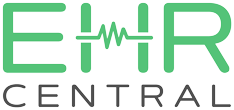Navigating the Complexities of Cardiology Billing and Credentialing: A Guide for Practices
In the fast-evolving realm of healthcare, cardiology practices encounter unique hurdles when managing billing and credentialing procedures. This guide aims to furnish practical insights and strategies, empowering cardiology practices to navigate these complexities

seamlessly.
Understanding Cardiology Billing:
- Key Components of Cardiology Billing: Cardiology billing encompasses a range of services, including Evaluation and Management (E/M) services, diagnostic testing such as echocardiograms and stress tests, and interventional procedures like angioplasty and stenting. Each of these services requires accurate coding and meticulous documentation for proper reimbursement.
- Coding and Documentation Guidelines: Accurate coding is paramount for cardiology billing to ensure appropriate reimbursement and compliance with regulations. Understanding the nuances of coding for different cardiology services and adhering to documentation guidelines are crucial steps in preventing billing errors and claim denials.
- Navigating Insurance and Reimbursement Challenges: Insurance denials can significantly impact revenue streams for cardiology practices. Proactively managing denials through effective appeals processes and staying updated on Medicare, Medicaid, and private-payer billing regulations are essential strategies for maximizing reimbursements and maintaining financial stability.
Credentialing in Cardiology:
- Importance of Provider Credentialing: Provider credentialing validates the qualifications and competence of healthcare professionals, ensuring they meet industry standards and regulatory requirements. Credentialing also plays a pivotal role in establishing trust with patients and other healthcare stakeholders.
- Steps in the Credentialing Process: The credentialing process involves thorough provider application and verification, review by credentialing committees or organizations, and contracting/enrollment with payers. Streamlining these steps and maintaining accurate credentialing records are key to avoiding delays in reimbursement and participation issues with insurance networks.
- Maintaining Credentialing Compliance: Ongoing monitoring of provider credentials, addressing any credentialing issues promptly, and staying abreast of credentialing requirements are essential for maintaining compliance. Implementing robust credentialing management practices and leveraging technology solutions can streamline these processes and reduce administrative burdens.
How EHRCentral enhances your healthcare practice?
Best Practices for Cardiology Practices:
- Utilizing Technology Solutions: Implementing electronic health record (EHR) systems with integrated billing functionalities can streamline documentation and billing processes, reducing errors, and improving billing accuracy. Utilizing specialized billing software and credentialing management platforms tailored for cardiology practices can further optimize revenue cycle management and credentialing workflows.
- Training and Education for Staff: Investing in ongoing training and education for clinical and administrative staff on coding, billing, and credentialing guidelines is crucial. Regular workshops, webinars, or certifications can enhance staff competency, minimize billing errors, and ensure compliance with regulatory requirements.
- Engaging with Professional Networks: Collaborating with billing and coding experts, participating in cardiology associations and forums, and seeking guidance from consultants or industry advisors can provide valuable insights and support. Networking with peers and industry experts fosters knowledge-sharing and helps practices stay updated on industry trends and best practices.
Conclusion:
Navigating the intricacies of cardiology billing and credentialing demands a proactive approach, ongoing education, and leveraging technology and industry resources. By implementing best practices, embracing technology solutions, and fostering collaboration within professional networks, cardiology practices can optimize financial performance, ensure compliance, and deliver exceptional patient care.





